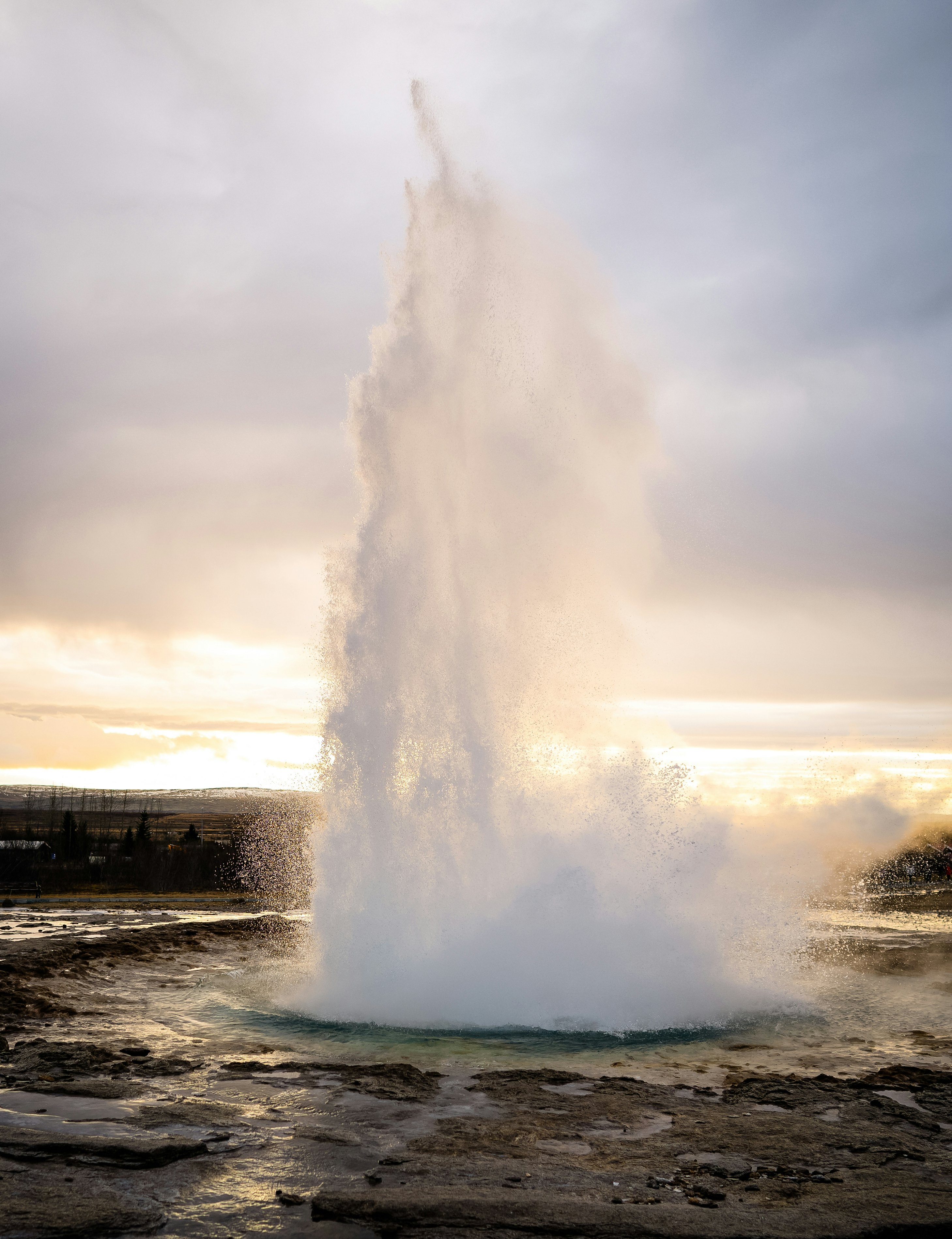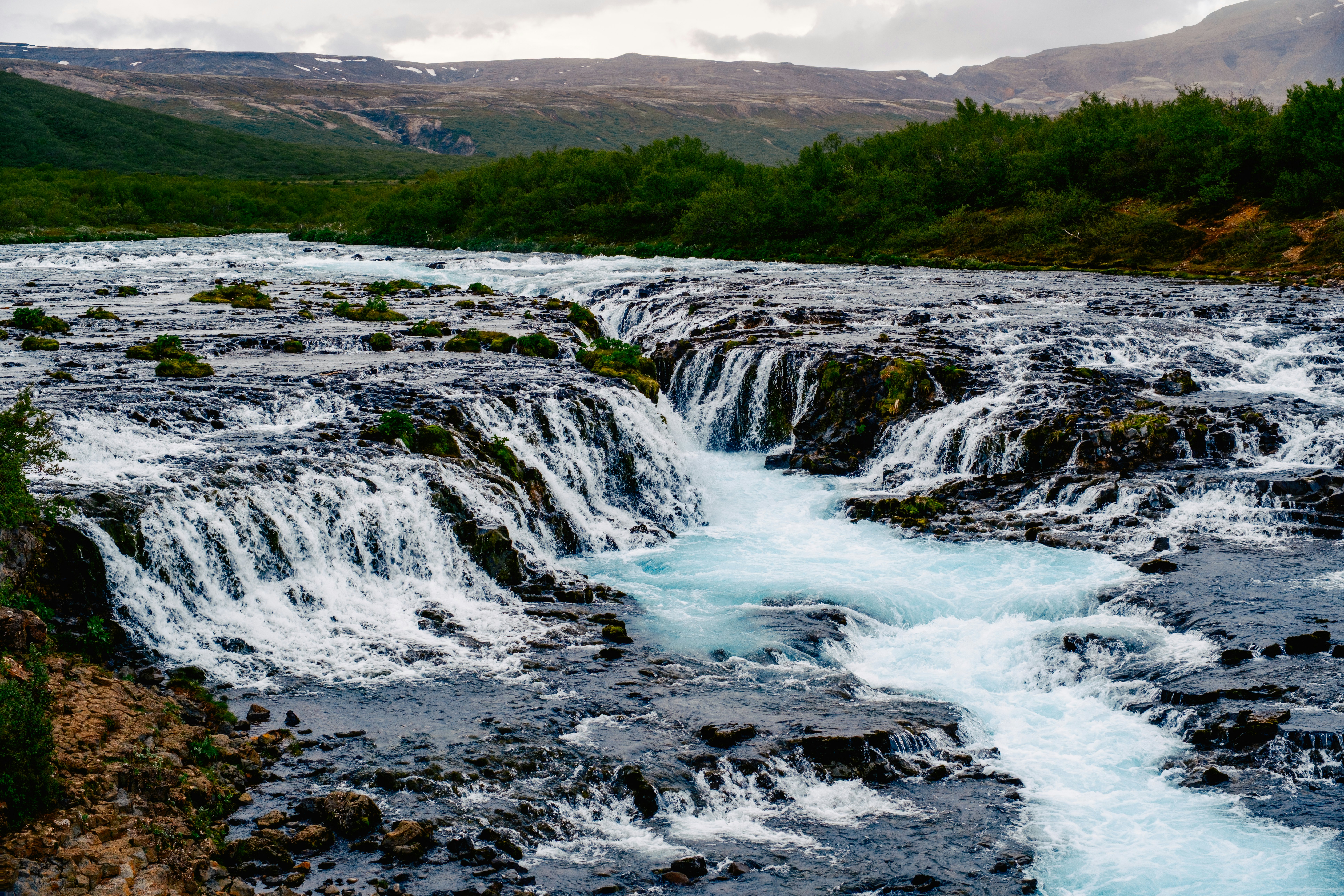
Jan 5, 20227 min read
A practical guide to living your best vanlife in Iceland: campers, routes and rules
Gullfoss is one of the stops on Iceland’s Golden Circle itinerary. Daniel Dorsa for Lonely Planet
Diving in glacial waters, absorbing the grandeur of the first-ever parliamentary site and watching the earth belch boiling water 30m (98ft) high...Iceland’s Golden Circle has it all.
The 300km (186-mile) route – which sits atop two continents (yes, continents!) – features three knockout sights: Þingvellir, where tectonic plates meet; Geysir, where water erupts more than 100 times a day; and the roaring and voluminous waterfall Gullfoss. Completing the full route is surely one of the best things to do in Iceland.
Here are the what, when and how about experiencing the Golden Circle on a visit to Iceland.
In Iceland, visitors will find a world of difference between summer (June to September) and winter (December to March).
Winter is less busy with visitors, but it’s dark for much of the day; count on setting off and returning at nighttime. Plus, snow and ice can make driving – or walking on icy paths – dangerous. But...it is northern lights season, which means you can pair your adventures with a chance to catch the aurora borealis. You’ll also find better prices for hotels and car rentals – though be aware that if you’re traveling further afield some mountain roads will be closed.
Summer brings more flexibility, with longer days. If you can, plan your sightseeing for early morning or late in the day to avoid the bulk of the tours plying the Golden Circle route throughout the day. You can check the live traffic monitor operated by the Iceland Tourism Board to analyze peak hours at main destinations.
It takes about four hours to drive the loop (without any stops), so you can definitely do the Golden Circle in a single (long) day from Reykjavík. If you're not in a hurry, take your time and book accommodation and activities along the way.
If time is tight, you can also choose from one of the myriad bus/van/Jeep tours of the Golden Circle, most of which take about eight hours. Many operators offer additional activities like ATV rides, horse riding and glacial adventures, or visits to the Blue Lagoon or Sky Lagoon.
The Golden Circle is very easy to drive on your own, and being behind the wheel allows you to visit at your leisure, stay overnight in the area and explore attractions further afield. Rent a car or camper to have the most freedom to explore the wild landscape of Iceland. As some roads are gravel only, it’s best to book a 4WD for more remote travel.
Outside of summer especially, drivers need to follow the weather and road forecasts with care.
If you’re traveling on a budget, there are no regular buses serving the main sights on the Golden Circle – though Strætó buses 72 and 73 loop south of it. In summer, there are daily departures between towns and villages along the Ring Road. Major towns have local services, too.

The first stop on the itinerary is monumental Þingvellir National Park, which marks the tectonic-plate boundaries for Europe and North America – complete with canyons and cracks that show the landscape pulling apart.
But there's an added layer of history that makes this UNESCO World Heritage Site even more unique: Iceland’s parliament was founded at the site in the year 930 CE. The world’s oldest such body, the Alþingi (Althingi, pronounced ál-thingk-ee; also called Alþing) started with the Vikings, who would hold meetings among this awe-inspiring geology, which created a natural amphitheater.
A boardwalk snakes between this enormous crevice on the earth’s surface, below deep canyon walls. The gap between these North American and Eurasian tectonic plates continues to grow by 2cm (less than an inch) each year.
From the Þingvellir Visitor Center above Almannagjá, follow the path down the dramatic crevice. At Lögberg (Law Rock), the Alþingi parliament convened annually – and the nation’s only paid servant, the law speaker, recited the existing laws to members of parliament (for others to memorize, until the written word arrived).
The river Öxará cuts the western plate, tumbling off its edge in a series of pretty cascades. The most impressive is Öxaráfoss, on the northern edge of the Alþingi site. The pool Drekkingarhylur was once used to drown women found guilty of infanticide, adultery or other crimes. Þingvallakirkja is one of Iceland’s first churches; the attached farmhouses include the prime minister’s summer house.
Planning tip: Two campsites at Syðri-Leirar and Vatnskot are open for camping from June to August. A year-round campsite at Nyrðri-Leirar is adjacent to the park’s service center north of the lake, which has a small cafeteria. Restrooms and laundry are available year-round; showers close from December to March. There’s a snack bar at Þingvellir Visitor Center in the south. Silfra Restaurant (south of Þingvallavatn) has slow-food ingredients and a bar.
Silfra is one of the prominent fissures in the Þingvellir National Park – only this one is filled with water from Lake Þingvellir. The water is extremely clear, as it comes from the Langjökull glacier and is filtered through lava rocks.
In Silfra, there are no fish or coral, just bright-green algae; the visibility is astonishing at up to 100m (328ft). Note that you can only dive or snorkel on a guided tour; reserve ahead with Scuba Iceland or Dive.is.
You can still get a look at it, even without diving. Park in lot No 5 and follow the walking trails that offer glimpses of the fissure, then marvel at the rocks you see through the pure glacial water.

Geysir has been Iceland’s world-famous natural phenomenon since the invention of printed illustrations. What’s more, the English word “geyser” – a periodically spouting hot spring – is directly derived from this named place.
To the surprise of many, the old Geysir has long since retired. Today, the spouting icon of Iceland is instead neighboring Strokkur: its name means ”golden waterfall,” and sunny days guarantee an impressive rainbow.
Strokkur erupts about every 15 minutes – about the time it takes to drive from the site to the Gullfoss, where a powerful glacial river tumbles to spectacular effect. You’ll need to walk about 500m (1640ft) from the parking lot for a close – and wet – view of this Icelandic icon. Gullfoss has 3.2km (2 miles) of walking paths, but don’t step over the barriers – they’re there to protect both you and the fragile environment.
Both attractions get crowded and things can feel more commercial than in other areas of Iceland. But as tour buses, along with a large number of visitors, usually depart from Reykjavík around the same time (morning), there are typically fewer visitors very early or late in the day.
Planning tip: Geysir Center houses a massive restaurant, cafe (Glima), soup outlet (Supa) and fast-food joint (Kantina).

Brilliant-blue Brúarfoss originates at the Langjökull glacier, and it’s that glacial meltwater flowing in the rivers Bruar and Hvítá that gives this waterfall its bright blue color.
The falls tumble 3m (10ft) into an azure pool punctuated by white rapids. Pay to park in the main lot, from where the falls are a few minutes’ walk – or take the scenic route by parking for free in the Brúará Trail parking lot and enjoying a 7km (4.3-mile) round-trip hike to the waterfall.
Laugarvatn (population 350) sits on the western shore of the lake of the same name, fed not only by streams running from the misty fells behind it, but by the hot spring Vígðalaug, famous since medieval times.
At swanky lakeside soaking spot Fontana, it’s possible to swim in the lake and relax inside a cedar-lined steam room fed by a naturally occurring vent below. There’s also a public pool where you can go for a dip for a lot less.

Get even closer to all the epic natural beauty by rafting the Hvítá river through a majestic water-sculpted canyon just below thundering Gullfoss. Giant rock walls seem to softly rise out of the water at what might be the most picturesque rafting location in the world. The glacial river’s name means “white river” – so named for its whitecaps – and the rapids (Class II) are suitable for first-time rafters. Expect waves, splashes and at least a few thrills.
Tour companies provide life jackets, wetsuits and helmets. Rafters must be aged at least 11 and know how to swim. The water is only “warm” enough to set out between May and September. A base camp offers showers, saunas, changing rooms, a restaurant and a bar.
Book ahead with Arctic Adventures or Arctic Rafting, the latter a local company that’s been leading river-rafting tours here since 1985.
If you’re completing the Golden Circle in the traditional direction (starting at Þingvellir), then you’ll end with the route from Gullfoss back to the Ring Rd (Rte 1) at Selfoss and the geothermal fields at Hveragerði.
Along the way, there’s plenty to entice you to explore some more. Flúðir has geothermal greenhouses and hot springs, and Skálholt was once Iceland’s religious powerhouse. This region constitute the southern lowlands of Iceland, blessed with flat fields (great for horse riding) and wet summers.

One of Iceland’s best-known volcanic craters, Kerið is a 6500-year-old magma chamber that collapsed, leaving vivid red and sienna earth surrounding an ethereal green lake. It’s less than a half-hour’s drive from Selfoss and is the most striking of several crater lakes in Iceland’s western volcanic zone.
Much of Kerið (Kerid) is made of rich, red volcanic rock, but its slope is a bed of mossy green during summer. Visitors can walk around the lake in about 30 minutes, or from the viewing platform down to the lake in about 15 minutes.
You’ll find a secluded natural bathing area at Hrunalaug – accommodating just a few people at any one time – in a rural valley 6km (4 miles) from Flúðir. Iceland’s oldest swimming pool, Gamla Laugin is ringed by natural rocks and hot springs (book ahead). At Reykholtslaug, you’ll find a small friendly public pool with two hot pools, a swimming pool and a blue water slide. Hveragerði’s public pool, Sundlaugin Laugaskarði looks like an old villa and was home to Iceland’s longest pool until 1966.

If you’re looking for a cheap holiday, Iceland isn’t it. After flights, you should allocate the largest portion of your budget toward accommodation. Stretch the rest of your budget by doing free activities: waterfalls, national parks and geothermal springs. Spend time out in nature hiking. Or stay up late in search of the aurora borealis.
Summer is peak tourist season in Iceland. Prices tend to spike for accommodation and car rentals, and you’ll want to book tours and activities in advance. Accommodation taxes, which include campsites and hostel beds, are typically included in displayed room prices. An 11% tax is also charged by tour operators and travel agencies (included in quoted prices). Increasingly, free natural wonders have paid parking to defray infrastructure costs.
Average daily costs:
hostel dorm: 4000kr (US$32) per night
3-star hotel: 22,000kr (US$180) per night
4-star hotel: 36,500kr (US$300) per night
Golden Circle tour: 9999kr (US$85)
Coffee: 400kr-600kr (US$3.25-US$5)
Beer: 1050kr-1700kr (US$8.50-US$14)
Pýlsur (hot dog): 300kr–600kr (US$2.50-US$5)
Main course (dinner): 4500kr-7000kr (US$37-US$57)
It’s very easy to tour the Golden Circle on your own (by car or even bike) – plus, it's fun to tack on additional elements that suit your interests. In the Golden Circle area, signs are well marked, roads are well paved and the distances relatively short. Note that parking requires payment at Almannagjá, Þingvellir and Kerið volcano crater.
If time is tight, you’re not a confident driver, or are traveling solo and/or on a budget, then seeing the Golden Circle on a day-long tour may well the better option.
This article was adapted from Lonely Planet’s Scandinavia guidebook, published in July 2025.